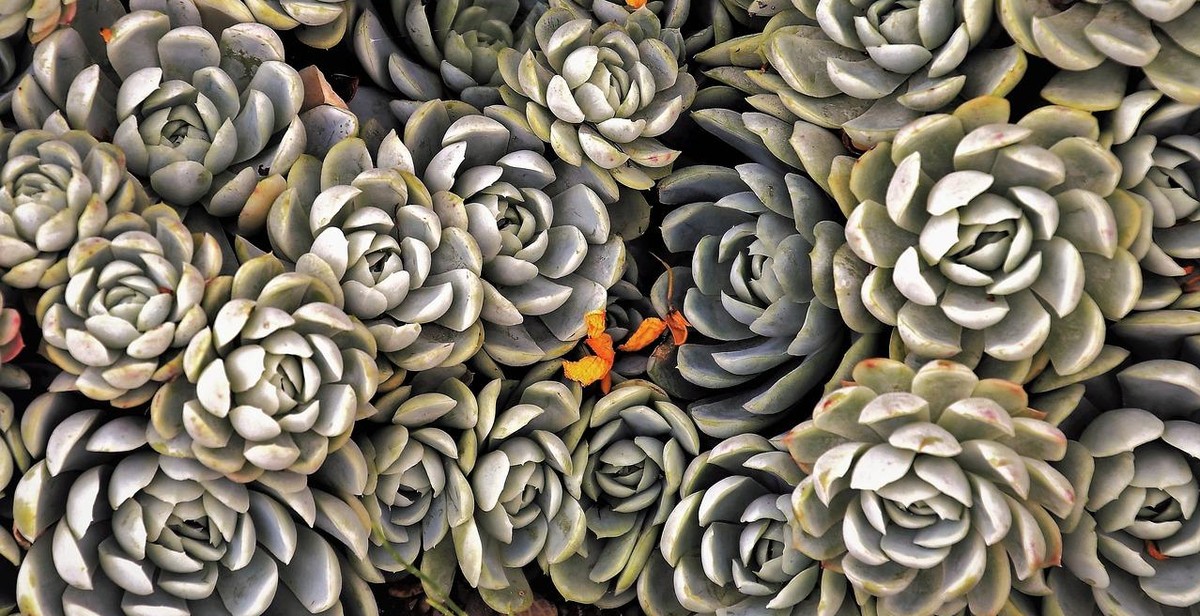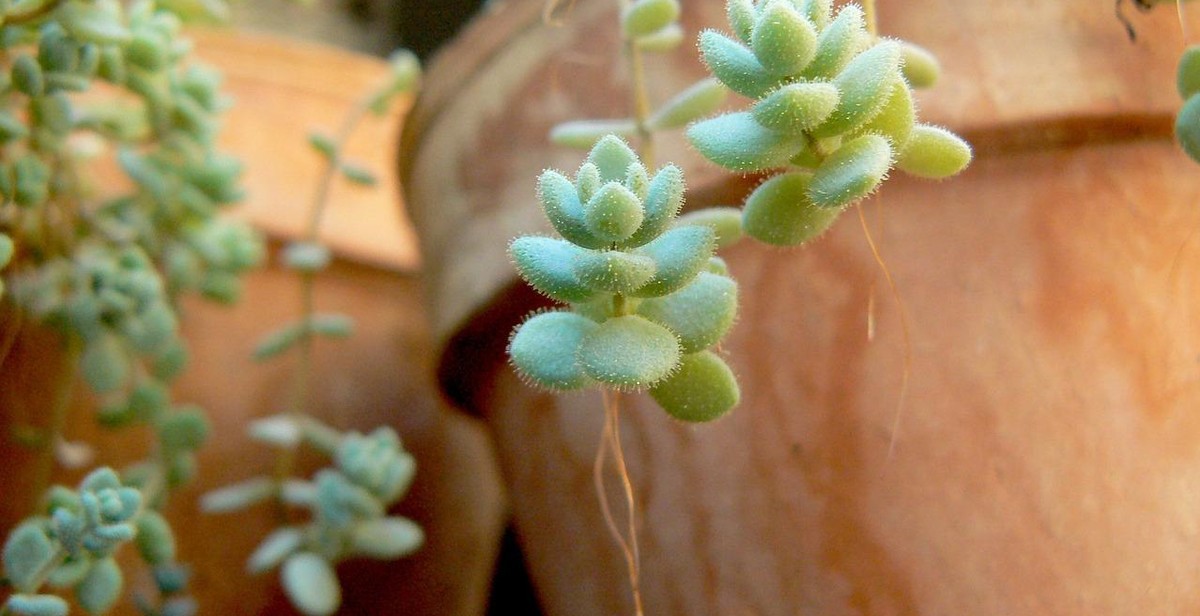Introduction
Succulent plants are becoming increasingly popular among plant enthusiasts due to their unique appearance and easy care requirements. These plants are known for their ability to retain water in their leaves, stems, and roots, making them perfect for those who don’t have a green thumb or live in areas with limited water resources.
However, like any other plant, succulents require proper care and attention to thrive. This article will provide you with a comprehensive guide on how to grow and care for succulent plants, including the best soil mix, watering techniques, light requirements, and common pests and diseases to watch out for.
The Benefits of Growing Succulent Plants
Aside from their unique appearance, succulent plants offer numerous benefits to their owners. They are low-maintenance, making them perfect for busy individuals or those who are new to gardening. Succulents also come in a variety of shapes and colors, making them a great addition to any indoor or outdoor space.
Moreover, succulent plants are known for their air-purifying properties, helping to improve the air quality in your home or office. They also have a calming effect and can help reduce stress and anxiety.
Types of Succulent Plants
There are thousands of different types of succulent plants, each with its unique characteristics and care requirements. Some of the most popular succulent plants include the Aloe Vera, Echeveria, Jade Plant, and Snake Plant.
Understanding the specific needs of your succulent plant is crucial to ensuring its health and longevity. This article will provide you with all the information you need to grow and care for your succulent plants successfully.
What are Succulent Plants?
Succulent plants are a group of plants that store water in their leaves, stems, and roots. This adaptation allows them to survive in arid and dry environments where other plants would not be able to grow. Succulent plants come in a variety of shapes, sizes, and colors, making them a popular choice for indoor and outdoor gardening.
Types of Succulent Plants
There are many different types of succulent plants, each with its own unique characteristics. Some common types of succulent plants include:
- Cacti: Cacti are a type of succulent plant that is known for their spines and prickly appearance. They come in a variety of shapes and sizes and are often found in desert climates.
- Aloe Vera: Aloe vera is a succulent plant that is known for its medicinal properties. It has long, pointed leaves that are filled with a gel-like substance that can be used to soothe burns and other skin irritations.
- Sedum: Sedum is a type of succulent plant that is often used in landscaping. It has small, fleshy leaves and produces clusters of pink, white, or yellow flowers.
- Echeveria: Echeveria is a type of succulent plant that is known for its rosette-shaped leaves. It comes in a variety of colors and is often used in container gardens.
Benefits of Growing Succulent Plants
There are many benefits to growing succulent plants, including:
- Low Maintenance: Succulent plants are easy to care for and require very little water. This makes them a great choice for busy people or those who do not have a lot of gardening experience.
- Air Purification: Succulent plants are known for their ability to purify the air. They absorb toxins and pollutants from the air, making them a great choice for indoor spaces.
- Aesthetically Pleasing: Succulent plants come in a variety of shapes, sizes, and colors, making them a great choice for adding visual interest to your home or garden.
- Medicinal Properties: Some succulent plants, like aloe vera, have medicinal properties that can be used to treat a variety of ailments.
| Category | Summary |
|---|---|
| Definition of Succulent Plants | A group of plants that store water in their leaves, stems, and roots. |
| Types of Succulent Plants | Cacti, Aloe Vera, Sedum, Echeveria, and many more. |
| Benefits of Growing Succulent Plants | Low maintenance, air purification, aesthetically pleasing, and medicinal properties. |

How to Grow Succulent Plants
Succulent plants are easy to grow and require minimal care. They are ideal for gardeners who want to add some greenery to their homes or gardens without having to spend a lot of time and effort on maintenance. Here are some tips on how to grow and care for succulent plants:
Choosing the Right Soil Mix
Succulent plants require well-draining soil that allows water to flow through easily. It is important to choose a soil mix that is specifically designed for succulent plants. These mixes usually contain a combination of sand, perlite, and peat moss, which provides excellent drainage and aeration.
Selecting the Right Pot
The pot you choose for your succulent plants is just as important as the soil mix. The pot should have drainage holes at the bottom to allow excess water to drain out. Terra cotta pots are a popular choice for succulent plants because they are porous and allow water to evaporate, which helps prevent root rot.
Watering Succulent Plants
Succulent plants store water in their leaves and stems, which means they do not need to be watered as frequently as other plants. Overwatering is one of the most common causes of succulent plant death. Water your succulent plants only when the soil is completely dry. When you do water, water deeply and allow the excess water to drain out of the pot.
Fertilizing Succulent Plants
Succulent plants do not require a lot of fertilizer. In fact, too much fertilizer can be harmful to these plants. Use a balanced fertilizer once a month during the growing season (spring and summer) to provide your succulent plants with the nutrients they need to thrive.
Light and Temperature Requirements for Succulent Plants
Succulent plants require bright, direct sunlight to grow and thrive. They can tolerate some shade, but too much shade can cause them to become leggy and weak. In terms of temperature, succulent plants prefer warm temperatures between 60 and 80 degrees Fahrenheit. They can tolerate cooler temperatures, but they should be protected from frost.
| Tip | Description |
|---|---|
| Rotate Your Plants | Succulent plants tend to grow towards the light, which can cause them to become lopsided. To prevent this, rotate your plants every few weeks so that all sides receive equal amounts of sunlight. |
| Watch for Pests | Succulent plants can be susceptible to pests such as mealybugs and spider mites. Keep an eye out for any signs of infestation, such as webbing or white spots on the leaves, and treat the plants with an appropriate pesticide. |
| Be Patient | Succulent plants grow slowly, so be patient with them. It may take several years for a succulent plant to reach its full size. |
By following these tips, you can grow and care for your succulent plants with ease. Remember to choose the right soil mix and pot, water and fertilize your plants appropriately, and provide them with the right amount of light and temperature. With a little bit of patience and care, your succulent plants will thrive and add beauty to your home or garden.

How to Care for Succulent Plants
Succulent plants are known for their ability to store water in their leaves, stems, and roots. This makes them very easy to care for, but there are still a few things you need to keep in mind to ensure their health and longevity.
Pruning and Propagating Succulent Plants
Pruning is an important part of succulent care. It helps to promote growth and keep the plant looking its best. You should prune your succulent plants at least once a year, but more often if they are growing too large or becoming too leggy.
When pruning your succulent, use a sharp, clean pair of scissors or pruning shears. Cut the stem or leaf at a 45-degree angle to promote healing. You can also propagate your succulent plants by taking stem or leaf cuttings. Allow the cuttings to dry for a few days before planting them in well-draining soil.
Pest and Disease Control for Succulent Plants
Succulent plants are generally very hardy and resistant to pests and diseases. However, they can still fall victim to common issues like mealybugs, spider mites, and root rot.
To prevent pest and disease problems, make sure your succulent plants are planted in well-draining soil and are not overwatered. If you do notice signs of pests or disease, treat them immediately with a natural insecticide or fungicide.
Seasonal Care for Succulent Plants
Succulent plants are very adaptable and can thrive in a variety of conditions. However, they do have specific seasonal care needs.
In the summer, succulent plants should be watered more frequently to prevent dehydration. In the winter, they should be watered less often to prevent root rot. Succulent plants also benefit from a period of dormancy in the winter, where they are not actively growing. During this time, reduce watering and fertilization.
By following these simple care tips, you can ensure that your succulent plants stay healthy and beautiful year-round.
Conclusion
After reading this comprehensive guide on succulent plants, you should now have a good understanding of how to grow and care for these unique and beautiful plants. Remember that succulents are not difficult to care for, but they do require some specific conditions to thrive.
Key Takeaways
- Succulent plants are low-maintenance and can thrive in a variety of conditions, but they do require some specific care.
- Proper watering is crucial for the health of succulent plants. They prefer well-draining soil and minimal watering.
- Succulents need adequate light to grow and thrive but can be sensitive to direct sunlight.
- Propagation is an easy and affordable way to grow more succulent plants, and there are different methods to choose from.
Final Thoughts
Succulent plants are a great addition to any home or garden. They are easy to care for, come in a variety of shapes and sizes, and can add a unique touch to any space. By following the tips and guidelines outlined in this guide, you can ensure that your succulent plants thrive and continue to bring you joy for years to come.
| Remember: | Succulent plants are not difficult to care for, but they do have specific requirements for optimal growth. |
| Key Point: | Proper watering and adequate light are crucial for the health of succulent plants. |
| Final Tip: | Propagation is an easy and affordable way to grow more succulent plants. |
